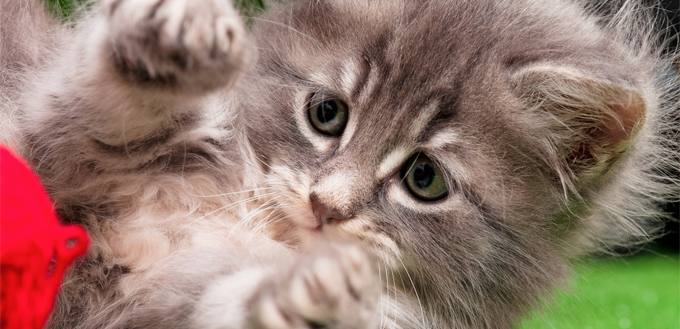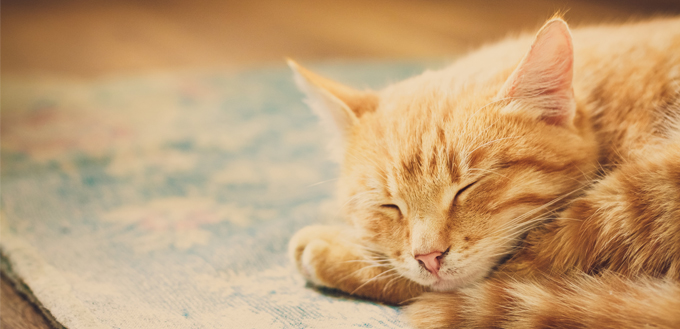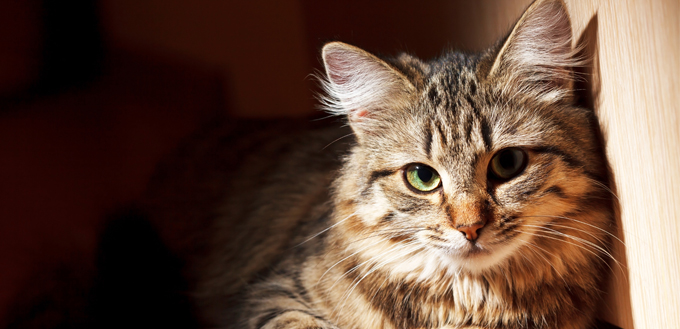So you’ve finally decided to adopt a cat after encountering a really cute and adorable kitty from your neighbor or perhaps after reading some of the very fine cat breed reviews online. Unfortunately, adopting a cat (or any other pet, for that matter) entails carefully considering a handful of factors. One of them is the cost of adopting a feline pet. Regrettably, it’s not only the initial adoption fees that you have to keep in mind; there are also other costs that have to be factored into your decision. Before you start processing the adoption papers of your kitty, make sure you comprehend the implications of the following costs as well.

The Initial Cost of Adopting a Kitty
There are no standards when it comes to kitty adoption fees. Different animal welfare agencies can have significantly different adoption fees. At the municipal level, this can be as low as $25. However, as you move towards highly urbanized areas and the metropolis, the fees can reach up to $255. This is also dependent on the state you are in. There are certain states wherein the cost of adopting cats is generally lower than others.
Another factor that may play into the final computation of the adoption fee is the age of the cat at the time of adoption. Typically, younger cats or kittens command a much higher adoption fee than older kitties. For example, a kitten below the age of 6 months will typically command a $125 adoption fee in most states while a cat that is aged 7 months to 4 years can have an adoption fee of $75. This is in New York. But if you go to Chicago, a similarly-aged cat might cost you $100.
Ideally, the adoption fee should already include neutering or spaying, deworming and flea treatment, complete medical or veterinary examination, and the application of age-appropriate immunizations or vaccinations. Other services that should already be included in the computation of the adoption fee include testing for feline leukemia virus (FeLV) and feline immunodeficiency virus (FIV), micro-chipping, and registering the cat.
Some animal welfare services can also include additional treatments while the cat is still in their care, waiting to be brought home. Some may also include post-adoption veterinary examination from a veterinary clinic that is partnered with the agency. Others may give a sample bag of high-quality cat food plus resources for kitty care.
In other words, you’d have to study carefully the different items or services that are already included in the adoption fee. For instance, if spaying or neutering is not yet included, then you’d have to find out how much would it cost you to have your new cat spayed or neutered outside. The same is true with micro-chipping, cat immunizations, and other initial treatments.
Check out our guides on the Best Cat Litter and Best Cat Litter Box.
Cost of Kitty Gear and Accessories
One of the reasons why cats end up in animal welfare units and shelters is that their previous owners did not really take good care of them. Hopefully, now that you’ve made up your mind about adopting one, you have also taken into consideration the other costs that go with adopting a kitty. Cats can live more independently than dogs. However, this doesn’t mean that you should already disregard their basic needs.
Every kitty deserves to have its own set of pet-appropriate and pet-safe gear and accessories. You don’t feed your cat on the same plate you use for the whole family; you buy it a cat food bowl. The same is true with water. For this, conventional water bowls may not work for the simple fact that cats don’t have high-enough thirst drive to make them want to drink. As such, you’ll need a pet water fountain, too.
Cat litter and litter box are a must-have for every home that has cats; unless you don’t mind turning your own house into a stinking mess. Cats will also benefit from interactive and puzzle pet-safe toys as well as cat scratching towers with integrated playground and resting areas. They will also require a scratching post, unless you don’t mind them turning your furniture into one. Cat beds are optional, but you’ve got to think in the long term. Some cats are prone to joint problems and will definitely benefit from a good cat bed. The same is true for pet carriers and cat strollers. This is not only important for taking your pet for a stroll at the park or at the mall; it’s also a safe way to travel with your cat to see its veterinarian.
You are potentially looking at a cost that can reach up to several hundreds of dollars. While it is easy to pick the cheapest one, it may not last that long prompting you to buy another one.
Read here our first-time cat owner checklist.

Cost of Feline Nutrition
Cats require high-quality animal proteins for their muscles and other tissues. That being said, canned or wet cat food is ideal since this has more proteins than dry cat food. A typical wet cat food comes with 78% moisture and only 12% of crude protein. Twelve percent may not look like much, but you have to do a little math here to obtain the dry matter weight composition for protein. Since 78% of the cat food is water, this means the dry ingredients (including protein) are only 22%. You divide 12% by 22% to get 54.54 or 54%. The protein content of this wet cat food is, thus, 54%.
Now try comparing that with dry cat food that contains about 12% moisture and 34% protein. Again, do the math to get the dry matter of the cat food by subtracting 12% from 100%. This gives you 88% which you’ll use to divide 34%. This gives you a protein content of 38.6 or 39%. So, which is higher, the wet cat food’s 54% or the dry cat food’s 39%?
There’s another reason why wet cat food is preferred over kibbles. Cats don’t drink that much as they depend on the moisture content of their prey for hydration. You can give dry cat food, why not, but you’d have to make sure your newly-adopted kitty will be drinking a lot of water as well.
Dry cat food has the advantage of taking good care of your kitty’s teeth and gums, however. Unfortunately, it is often filled with carbohydrates that cats don’t need (have you ever seen a tiger or a lion munching on a pumpkin?). Carbs are great for supplying the energy needed by cats. However, if you happen to have a kitty that is generally laidback and doesn’t do any physical activity, then these excess carbs can be easily translated into fat which can turn your kitty into the next Garfield.
Wet cat food is expensive. The cost can actually double if you don’t observe proper storage since it can easily spoil once the can has already been opened. You don’t give spoiled cat food ever. As such, it goes to waste. It is for this reason that some folks would rather combine dry cat food with wet cat food in order to economize.
You also need to consider the possibility that your cat may be allergic to a certain food item. In such cases, you’d have to work closely with your veterinarian to decide the best food to get for your hypersensitive cat. The same is true with cats that may have other health problems where special diets may be required. You’ve got to factor these, too, in your cost considerations for adopting a cat.
Whatever brand of cat food you eventually decide on, just make sure it is appropriate for your cat. This is perhaps the costliest thing that all pet parents have to face as pet nutrition is a lifetime need.
Cost of Grooming
Even if you do not bring your kitty to a professional pet groomer, you will still need to secure a few basic things for keeping your cat looking good. You should always have a pet-appropriate brush or comb especially if you’re adopting a long-haired breed. While cats can clean themselves exceptionally well, bathing them can be helpful. As such, you’ll need cat bathing implements like cat-appropriate shampoo and hair dryer for pets.
You May Also Like: Medicated Cat Shampoo
You will also need to trim or clip its nails so getting a cat-appropriate nail clipper is a must. The same is true with ear cleaners, although you can easily make your very own home-made solution. Most people think cats don’t need to brush their teeth; they do. You’ll have to buy a toothbrush that is made specifically for cats as well as toothpaste that is specially formulated for kitties.
Related Post: Best Cat Nail Clippers
Cost of Veterinary Care for Cats
Even if your cat is not sick, it will still benefit a lot from regular trips to the vet. This is very important especially during the first few months your adopted cat has been in your life. While the animal welfare unit you got the cat from may have already performed a comprehensive medical checkup prior to its release, there’s no telling what might have transpired in the period covering its last checkup to the time it is already in your house. So it’s best to have a baseline data about your adopted cat’s health status.
Your vet can give your cat vaccinations against rabies, feline distemper, feline viral rhinotracheitis, and feline calicivirus as well as chlamydia, bordetella, and feline leukemia. This is especially true if you adopt a younger kitty. Adult cats typically need less frequent shots usually given once every 1 to 3 years.
In addition to regular veterinary trips, you will also have to provide a budget for your adopted cat’s deworming and flea treatment.

Cat Health Insurance
Having your adopted kitty insured is not really a must-do. However, it is always something that all pet parents should consider especially if you have a cat that is quite predisposed to the development of certain diseases that might require huge expenses in both veterinary care and lab work. Choosing the right pet insurance is, thus crucial.
Ideally, you would want to insure your adopted kitty at the earliest possible time. Pet health insurance typically provides coverage for kittens at a much lower premium compared to adult and older cats. This is because kittens do not have any pre-existing conditions yet so they naturally have lower insurance premiums.
In picking a suitable health insurance for your kitty, it pays to carefully look at the coverage. Some providers will only include medical events, but will not cover genetic conditions or even hospitalization. Some can offer a whole range of products that cover the entire gamut of veterinary and health care needs of pets from veterinary professional fees to lab work and even behavioral therapy. Understand, however, that the more extensive the coverage, the higher is the insurance premium.
Emergency or Contingency Fund for Kitties
It is always a must for every adoptive pet parent to set up a contingency or emergency fund for their cats or any other pet. This is especially true if you’re not going to get health insurance for them. And even if your cat has health insurance, it still pays to set up a contingency fund for those just-in-case scenarios.
For example, while your pet health insurance may cover for emergency care, there may be an instance when you will have to shoulder the expenses first and the insurance provider will simply be reimbursing your expenses. If you don’t have a contingency fund, then you’d have to get it from your credit card. If your cat happens to get into a fight with a neighbor’s kitty and the other cat was severely injured, you can bet that your neighbor will be obliging you to take care of the medical expenses of his or her kitty. If you don’t have an emergency fund, then you’d be groping in the dark, quite literally.
Being a pet parent of an adoptive cat entails a lot of responsibilities, notwithstanding costs. And if you think the outflow of cash stops the moment you pay for the adoption fee, think again. There are other costs that need to be factored in when adopting a cat.
Related Post: 10 Tips When Buying Pet Insurance
Sources:
- Adopt a Kitten (or Two!) with Discounted Fees During the ASPCA’s Summer Purr-Motion!, The ASPCA
- Francis Battista, Reasons to Adopt a Pet, Best Friends Animal Society






